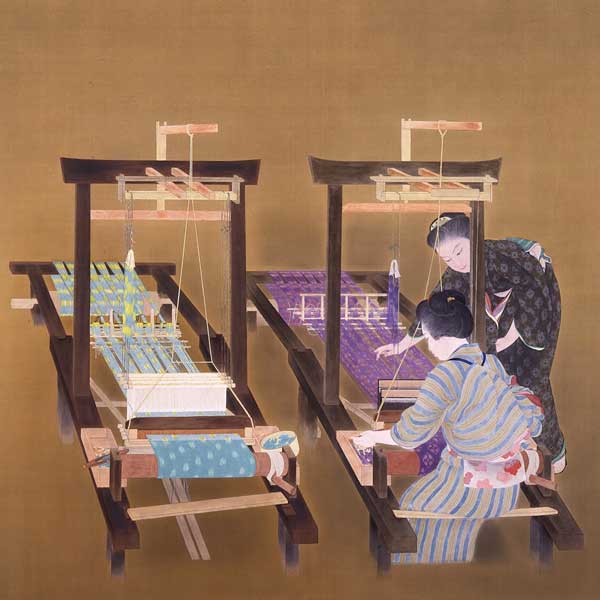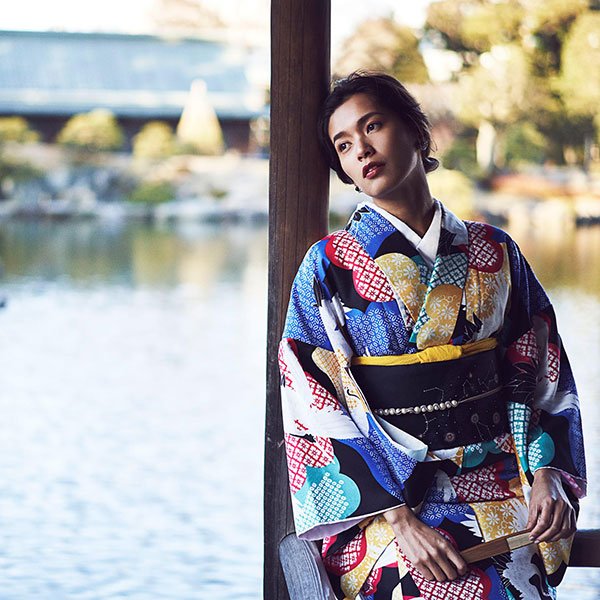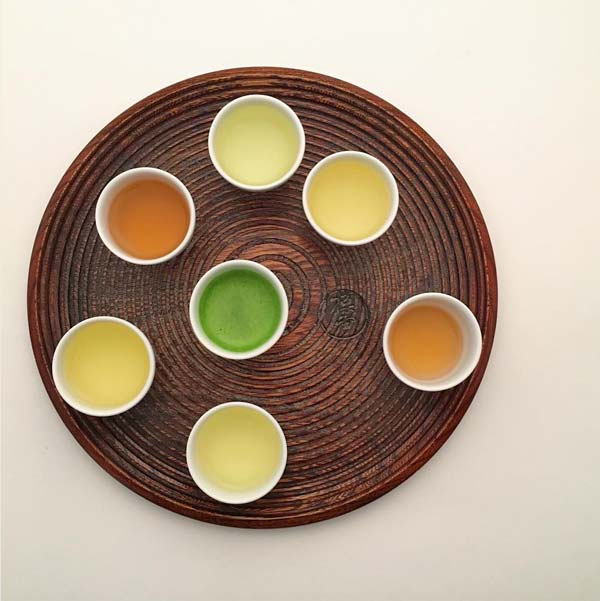10 Iconic Tadao Ando Buildings You Should Visit
by Lucy Dayman | TRAVEL
© 663highland / Creative Commons, Hyogo Prefectural Museum of Art
When it comes to shaping Japanese architecture today, there’s no name more iconic than Tadao Ando. The self-taught architect was once on a path to become a successful boxer, however discovering a love of design he decided to follow a career in architecture despite any formal training
His unorthodox approach to art and design has seen him push the boundaries of what architecture can be time and time again. As well as creating imposing churches and breath-taking temples, Ando was one of the driving forces behind the rebirth of Naoshima as Japan’s premier modern art destination.
To better understand the self-taught talents of Japan’s most influential modern architect, we’ve put together a crash course in everything Ando. From how his beginnings as a sportsman and truck driver shaped his work, to the 10 Tadao Ando buildings you should visit while you’re in Japan.
Who is Tadao Ando?
Tadao Ando
Ando’s rise to architectural fame was an unconventional one. The Osaka visionary was born in 1941 and subsequently grew up in a Japan recovering from World War II. He was first drawn to architecture at age 15 after picking up a book of sketches by Le Corbusier, a Swiss-French architect, designer, painter, and urban planner.
He didn’t enter the field directly however, instead taking a variety of odd jobs. He said in an interview with Tatler that to be the best architect “‘[I]t’s vital for one to take in a lot of scenery – travelling makes an architect. I became a boxer because the matches allowed me to travel overseas and experience different architectural styles.”
Ando never studied his craft at any traditional institution but instead devoured books. His hunger for knowledge was so ravenous that to save for books he cut out a meal each day to afford them. By 1969 he was confident enough in the self-taught skills that he opened his one-man design studio, Tadao Ando Architectural & Associates.
What Makes Tadao Ando Architecture?
© 663highland / Creative Commons, Suntory Museum
Ando explained in an interview that he believes “architecture is something to be experienced with all five senses – not just the eyes.” His work is iconic and recognizable, but at the same time, it never feels cookie-cutter, and there’s plenty of conscientious reasoning behind this. Ando’s work has a strong foundational ideology, which he calls pure geometry. While imagining each piece he creates, attention to the detail of the building’s natural surroundings dictate the shape of the outcome.
The theory of pure geometry means essentially to design a building to such perfection that it doesn’t just look beautiful, but allows viewers to experience every element of a structure's surroundings. He wants people to rediscover natural and subconscious elements like wind and light. Many of his water-centric pieces which we will visit below are an excellent example of Ando’s ability to interweave natural and man-made elements.
Zen aesthetics come from the philosophy of Zen Buddhism, and in simple terms, it’s an appreciation of the beauty of simplicity (find out What is Zen Art?). The philosophy of Zen features heavily in traditional culture; it’s the famous Japanese artful minimalism, insistent that often less is more. Ando’s works embody this ideology even if unconsciously. In their stripped-back, concrete bareness his buildings carry a beauty that reflects his nature-driven focus.
As with all great art, there’s no substitute for experiencing his work for yourself, so here are our recommendations for the 10 Tadao Ando buildings to see while you’re in Japan!
1. 21_21 Design Sight (2007)
A meeting of two of the country’s biggest design minds, 21_21 Design Sight is a collaborative effort between Ando and iconic fashion designer Issey Miyake. This design gallery is located in the densely museum-populated district of Roppongi. The idea of this particular building was not only to show works, but to create a center that looks into how the element of design enriches our daily lives.
Take some time to inspect the carefully hand-sanded steel roof, inspired by Issey Miyake's A-POC ("A Piece of Cloth") concept. Though most of this building is actually located underground, the long stretching panels of glass ingenuously allow natural light to flood the concrete bunker.
While you're visiting 21_21, here are some other top things to do in the Roppongi Art Triangle!
Address: 9-7-6 Akasaka, Minato-ku, Tokyo (see map)
Website: 2121designsight.jp
2. Hyogo Prefectural Museum of Art (2002)
© 663highland / Creative Commons, Hyogo Prefectural Museum of Art
The Hyogo Prefectural Museum of Art in Kobe is another impressive work by this concrete loving architect. The purpose built municipal art gallery was opened in 2002 and features a variety of works from both foreign and Japanese artists. The most striking element of this art space is the staircases that have provided plenty of photographic fodder over the years! With architecture as striking as the art it holds, this place is really something special for art lovers of all walks of life.
Address: 1-1-1 Wakinohamakaigandori, Chuo, Kobe, Hyogo (see map)
Website: artm.pref.hyogo.jp
3. Church of Light (1989)
© S. Ken / Creative Commons, Church of Light
If you ever find yourself in the humble town of Ibaraki, about 25km outside of Osaka it would be a crime not to pay a visit to the Church of Light, one of Ando’s signature architectural works. Blending design, spirituality and history all into one building, this renovation Christian compound is nothing short of astonishing.
The mainly concrete building plays with light - an ideology similar the stained glass windows of traditional Christian churches - but he turns the whole idea on its head completely. This dark, meditative concrete shell of a building is pierced by an illuminated cross that transmits the natural outdoor light into the church hall. Mixing innovation with simplicity, this is one work Tadao Ando fans cannot miss.
Address: 4-3-50 Kitakasugaoka, Ibaraki, Osaka (see map)
Website: ibaraki-kasugaoka-church.jp
4. The Oval at Benesse Art Museum Naoshima (1995)
© Alex Roman, Chichu Art Museum, Naoshima, from his book From Bits to the Lens
Ando had a big hand in creating the landscape of Naoshima, an island that is now one of the most famous modern art destinations in Asia, and possibly the world. While writing a feature on Tadao’s work and the works of Naoshima would require a whole new article, let’s just look at The Oval as an example piece.
The Oval is one of Ando’s most immersive works as it’s a hotel. Only guests staying at the Oval have access to the space, which was constructed around the concept of coexistence between nature, art, and architecture. The building blends effortlessly into its surroundings while not being restricted by it. Built on a hill overlooking the Seto Inland Sea and the natural beauty of Naoshima, it’s just a taste of Ando’s work on this incredible island.
Address: 3419 Miyanoura, Naoshima, Kagawa-gun, Kagawa (see map)
Website: benesse-artsite.jp
If you're interested to read more about Tadao Ando, including his many works outside of Japan, you can take a look at Tadao Ando: Complete Works 1975-Today by Philip Jodidio. It contains a comprehensive collection of his designs, including some interesting architectural sketches by the man himself.
5. 4x4 house (2003)
© Naoya Fujii / Creative Commons, 4x4 House
This building located in Kobe is powerful in its simplicity. It was the result of a magazine competition which saw Ando create a structure adapted to the specific requirements of the site, which was greatly influenced by the Hanshin earthquake that devastated the area less than 10 years before.
Once he completed construction in the first house, another client asked Ando to build something similar on the neighboring piece of land. This gave Ando the opportunity to fulfill his original idea of two houses crafted from different materials coming together to create one wholly impressive work of design. Situated on the Hyogo coast, each floor of these buildings is a concrete mass, which comes together to act like a lighthouse, offering incredible views of the ocean below.
6. Osaka Culturarium at Tempozan (1994)
© Hiromitsu Morimoto / Creative Commons, Suntory Museum
One of Osaka city’s most striking buildings, the Osaka Culturarium at Tempozan is an embodiment of Ando’s love of pushing the architectural boundaries while exploring one of his favorite themes, the meeting of man, water and architecture. Situated on the Osaka harbor, this exhibition venue flows effortlessly into the neighboring ocean, blurring the lines of where exactly man and nature meet.
Many of Japan's best museums blend art and nature into an incredibly enlightening and refreshing destination. Check out some of our other favorites in the 6 Best Museums in Japan Where Art and Nature Collide!
Address: 1-5-10 Kaigandori, Minato, Osaka (see map)
Website: osaka-c-t.jp
7. Chichu Art Museum (2004)
© Benesse Art Site Naoshima, Chichu Museum
Overflowing with the most groundbreaking contemporary art museums you’ll find anywhere in the world, it’s also the unofficial island of Tadao Ando. He designed a number of buildings on the area, but arguably the most famous is the Chichu Art Museum.
Keeping the harmony between man and nature in mind, Ando built most of this museum underground to avoid impacting the naturally beautiful scenery of the Seto Inland Sea that borders the island. Keeping a very minimal aesthetic, the space is mainly built from concrete, providing the perfect low key (though still fascinating) backdrop to the works by James Turrell, Walter De Maria and Claude Monet that live inside.
Address: 3449-1 Tsumuura, Naoshima, Kagawa-gun, Kagawa (see map)
Website: benesse-artsite.jp
8. Water Temple Hyogo (1991)
© Oniwa Gardens, Water Temple Hyogo
Tadao continued his unique envisioning of spiritual spaces with this, Honpukuji is a temple originally envisioned for the Shingon Buddhist sect. The modernist temple is connected to the original temple compound and cemetery by a sloping uphill path, thus connecting the past with the modern-day. At the top of the structure sits a pool of water that artfully reflects the natural beauty of the structure’s surroundings, blending it into the scenery.
Splitting the pool in two is a staircase which leads down to the temple’s most sacred site, the inner sanctuary. Visitors are gradually introduced into the sanctuary by the vermillion light which bounces off the concrete walls of the passageway, the light gradually growing brighter as you approach the inner sanctum. It’s an ideal example of three recurring themes in Ando’s work, his connection to spirituality, his playfulness with light, and his focus on blending his works with the natural surroundings.
Address: 1310 Ura, Awaji, Hyogo (see map)
9. Chapel on the Water (1988)
Nestled in the lush and often snow-covered hills of Tomamu, Hokkaido, is Chapel on the Water, one of the most striking churches in the country. Ando’s church is comprised of two main cubes, the large of the pair is the chapel, while the smaller is the entrance and a spiral staircase conjoins the two. To enter the church is a ritualistic experience in itself. Guests must enter via the top class cube and make their way in procession to the lower floor.
The main feature of the church is its view, which looks beyond the alter onto a still pond. The building’s nature-centric design ethos is worlds away from traditional, European churches which usually focus on artificial flourishes that separate the body from the outside, like stained glass windows and tall ceilings.
Address: Nakatomamu, Shimukappu, Yufutsu District, Hokkaido (see map)
Website: tomamu-wedding.com
10. Osaka Prefectural Sayamaike Museum (2001)
© Kenpei / Creative Commons, Osaka Prefectural Sayamaike Museum
This piece of architectural artistry long pre-dates any Tadao Ando projects. It was built on the bed of Sayamaike Pond, an artificial lake that has a history reaching back to the 7th century.
Water is the key protagonist of this building’s story, so Ando literally wove it into the walls of this incredible piece of work. For five minutes every hour, water is pumped over the straight concrete walls, creating an artificial waterfall alleyway. It’s the perfect harmony of both artificial and natural that only Tadao and his team could have envisioned.
Address: 2 Ikejiri-naka, Osakasayama City, Osaka (see map)
Website: sayamaikehaku.osakasayama.osaka.jp
What's your favorite Tadao Ando building? Let us know in the comments below!
September 13, 2019 | Travel, Japan
JO SELECTS offers helpful suggestions, and genuine recommendations for high-quality, authentic Japanese art & design. We know how difficult it is to search for Japanese artists, artisans and designers on the vast internet, so we came up with this lifestyle guide to highlight the most inspiring Japanese artworks and designs for your everyday needs.
All product suggestions are independently selected and individually reviewed. We try our best to update information, but all prices and availability are subject to change. Japan Objects is a member of the Amazon affiliates program and if you buy something through our links, Japan Objects may earn an affiliate commission at no cost to you.
















TRAVEL | April 26, 2024